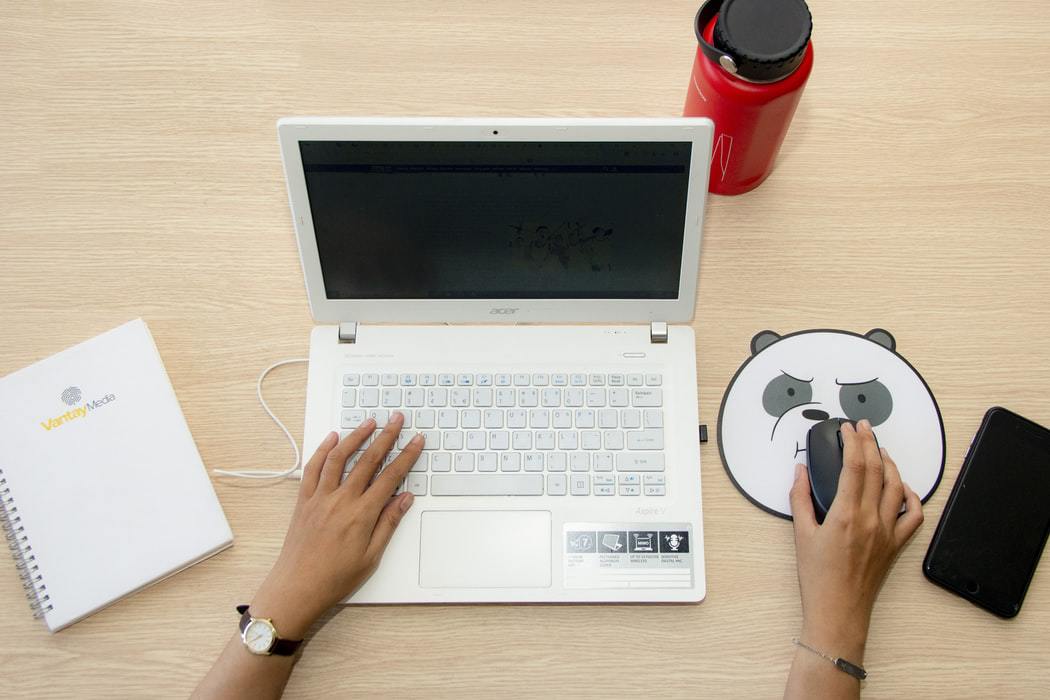The mouse pointer is an essential tool for navigating and interacting with your computer. However, there are times when the cursor may disappear or stop working, causing frustration and hindering your productivity. In this comprehensive troubleshooting guide, we will explore various solutions to help you regain control of your mouse pointer in Windows 10. Whether your cursor disappears after a Windows update, while using specific programs, or when waking your computer from sleep mode, we’ve got you covered.
Common Causes of a Disappearing Mouse Cursor
Before diving into the solutions, let’s first understand some common causes that can lead to a disappearing mouse cursor:
- Driver Issues: Outdated or incompatible mouse drivers can cause the cursor to disappear or malfunction. Updating or reinstalling the drivers may resolve the problem.
- Wrong Settings: Incorrect mouse settings, such as disabling the device or enabling options like “Hide pointer while typing,” can result in a missing cursor.
- Windows Updates: Installing the latest Windows 10 updates may sometimes lead to mouse-related issues, including a disappearing cursor.
- File Corruption: System file corruption can affect the functionality of the mouse pointer. Repairing the system using built-in tools may help resolve this.
Now that we have a better understanding of the potential causes, let’s move on to the solutions.
Re-enable Your Mouse
If your mouse cursor has disappeared, it’s worth trying to re-enable it to see if that solves the problem. Here are two methods you can use:
Method 1: Using Keyboard Shortcuts
- On a laptop, try pressing the key combination specific to your device that enables or disables the mouse. Typically, this involves using the Fn key in combination with F3, F5, F9, or F11. Consult your laptop’s manual for the exact key combination.
- Alternatively, you can access the mouse settings:
- Press the Windows key on your keyboard, then type “mouse” and select “Mouse settings” from the search results.
- In the Mouse settings window, navigate to the “Additional mouse options” section.
- Use the Tab key to highlight the device you want to enable and press Enter.
- If the device is disabled, use Tab to highlight the “Enable” button and press Enter to enable it.
Method 2: Updating Mouse Drivers
Outdated or incompatible mouse drivers can cause cursor-related issues. Updating the drivers can potentially resolve the problem. Follow these steps:
- Press the Windows key + X and select “Device Manager” from the menu.
- Use the Tab key to navigate to the “Mice and other pointing devices” category and press the Right arrow key to expand it.
- Use the Down arrow key to select your mouse and press Shift + F10 to simulate a right-click.
- From the context menu, select “Update driver” and choose the option to search automatically for drivers.
- Wait for Windows to update the driver. If the latest version is not compatible, you may need to consider rolling back the driver (refer to Solution 2 for instructions).
Alternatively, you can use driver updater software like Driver Easy to automatically detect and install the correct drivers for your mouse.
Solution 2: Roll Back Mouse Driver
If updating the mouse driver doesn’t resolve the issue, you can try rolling back to a previous version. Here’s how:
- Open Device Manager by pressing the Windows key + X and selecting “Device Manager” from the menu.
- Navigate to the “Mice and other pointing devices” category using the Tab and Down arrow keys.
- Select your mouse and press Enter to access its properties.
- Use the Tab key to navigate to the “Driver” tab and select the “Roll back driver” option.
- Follow the on-screen instructions to complete the rollback process.
Solution 3: Repair System Files
Corrupt system files can impact the functioning of the mouse pointer. Running a system scan using tools like Fortect can help identify and repair these files. Follow these steps:
- Download and install Fortect, a professional Windows repair tool.
- Launch Fortect and initiate a free scan of your system.
- Wait for the scan to complete, and review the detailed report of the issues detected.
- Click on “START REPAIR” to begin the repair process (requires the full version of Fortect).
Fortect replaces faulty system components, ensuring a fresh system without the need for a complete Windows reinstallation. This process helps resolve various computer issues, including a disappearing mouse cursor.
Solution 4: Check Power Settings
In some cases, power settings can affect the functionality of the mouse cursor. Adjusting these settings may help resolve the issue. Here’s how:
- Press the Windows key + S and type “power plan.” Select “Choose a power plan” from the search results.
- Locate your current power plan and select “Change plan settings” next to it.
- In the following window, click on “Change advanced power settings.”
- Look for options like “When I close the lid” and “Plugged in.” Set both options to “Do nothing.”
- Click Apply and OK to save the changes.
Solution 5: Disable Cortana
Disabling Cortana, the virtual assistant in Windows 10, can sometimes resolve mouse cursor issues. Follow these steps:
- Press the Windows key + S and search for “voice activation.” Select “Voice activation privacy settings.”
- Scroll down to the “Choose which apps can use voice activation” section.
- Locate Cortana and set both “Let Cortana respond to Cortana keyword” and “Use Cortana even when my device is locked” to Off.
Disabling Cortana may help resolve conflicts that could be affecting the mouse cursor.
Solution 6: Remove Recently Installed Software
If you recently installed any software before experiencing the disappearing cursor issue, it’s possible that the software is causing conflicts. Removing the software may resolve the problem. Follow these steps:
- Press the Windows key + X and select “Settings” from the menu.
- In the Settings app, navigate to the “Apps” section.
- Select the recently installed software and choose “Uninstall.”
- Follow the on-screen instructions to complete the uninstallation process.
To ensure complete removal, consider using uninstaller software that can remove any leftover files associated with the software.
Solution 7: Run a Full System Scan
Performing a thorough virus scan can help identify and remove any malware that might be interfering with the mouse cursor. Follow these steps:
- Press the Windows key and type “Windows Security” to open the Windows Security app.
- Go to “Virus & threat protection” and select “Scan options.”
- Choose “Full scan” and click on “Scan now.”
- Wait for the scan to complete. This process may take some time.
Running a full system scan with Windows Defender or a third-party antivirus software can help eliminate potential malware-related issues affecting the mouse cursor.
Solution 8: Change Mouse Cursor Scheme
Changing the mouse cursor scheme to a different option and disabling the pointer shadow can sometimes resolve the disappearing cursor problem. Follow these steps:
- Press the Windows key + R to open the Run dialog box.
- Type “control mouse” and press Enter to open the Mouse Properties window.
- In the Pointers tab, select “None” from the drop-down menu to change the cursor scheme.
- Uncheck the box next to “Enable pointer shadow” to disable the pointer shadow.
- Click Apply and OK to save the changes.
This solution may not work for everyone, but it’s worth trying if other methods have not resolved the issue.
Solution 9: Disable Hardware Acceleration in Chrome
If the mouse cursor disappears only when using Google Chrome, disabling hardware acceleration in the browser settings may help. Follow these steps:
- Open Chrome and click on the three-dot menu icon in the top-right corner.
- Select “Settings” from the dropdown menu.
- Scroll down to the bottom and click on “Advanced” to expand the advanced settings.
- Under the “System” section, toggle off the “Use hardware acceleration when available” option.
- Restart Chrome and check if the mouse cursor is now visible.
Disabling hardware acceleration in Chrome can sometimes resolve conflicts that affect the mouse cursor.
Solution 10: Check for Multiple Monitors or Projectors
If you use multiple monitors or connect your computer to a projector, it’s possible that the mouse cursor is appearing on another screen. Moving the mouse cursor vigorously may help locate it. Additionally, pressing Ctrl+Alt+Del can temporarily bring the cursor back on the primary screen.
Solution 11: Additional Troubleshooting Steps
If none of the above solutions have resolved the issue, here are a few additional troubleshooting steps you can try:
- Check for and remove any malware using reputable antivirus software.
- Unplug all USB devices and restart your computer to rule out any conflicts.
- Power down your computer for a few minutes and then restart it.
- Use a registry cleaner tool to fix any registry problems that might be affecting the mouse cursor.
- Consider using System Restore to revert your computer to a previous state before the issue occurred.
Conclusion
A disappearing mouse cursor can be frustrating, but with the troubleshooting steps outlined in this guide, you should be able to resolve the issue. Start by re-enabling your mouse or updating the drivers, and continue with other solutions if necessary. Remember to check for updates, repair system files, and adjust power settings as needed. By following these steps, you can regain control of your mouse pointer and continue using your computer smoothly.
If you’ve tried these solutions and are still experiencing issues, it may be helpful to seek further assistance from technical support or consult online forums for additional guidance.






